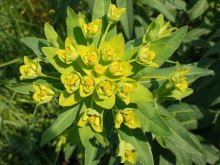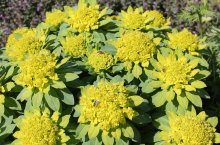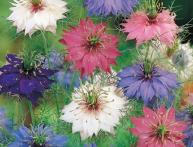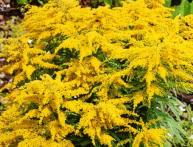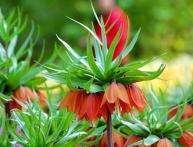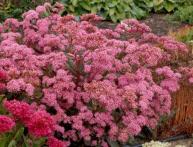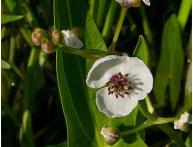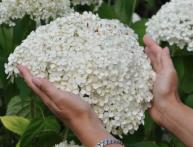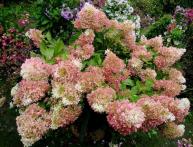Swamp spurge, description, planting, cultivation, its role in the garden and in folk medicine

Sometimes the most familiar, long-known and widespread plants suddenly begin to enjoy popularity among flower growers and landscape designers. The plant is also expected to reach such a peak in popularity. spurge swampy Nowadays, milkweed is becoming fashionable when decorating sites, especially when it comes to the banks of reservoirs and other moist places. In addition, marsh spurge is used as a medicinal plant in folk medicine.
Content:
- Description of the plant Euphorbia swamp
- How to plant swamp spurge in a garden plot, caring for it
- The use of marsh milkweed for medicinal purposes
Description of the plant Euphorbia swamp
Swamp spurge is a perennial herbaceous species from the genus Euphorbia of the Euphorbia family. It has fairly thick, straight shoots. Their height is from 0.6 m to 1.0 m. If the shoot is broken, then white thick juice with a sharp bitter taste emerges from the break. The juice is poisonous! The lower part of the stem loses its leaves early and appears bare. The stem is highly branched, there are branches both non-flowering and bearing peduncles.
The stems are thick at the base, thinning towards the top. The rhizome of marsh milkweed is cylindrical, powerful, and long. The leaves are oval, elongated, slightly serrated. The leaf blades are bluish green, sometimes turning red, the leaves are almost sessile.On the peduncles, the flowers are collected in umbels, the bracts are large, yellow-green in color. Blooms spurge in the second half of June and blooms for several weeks.
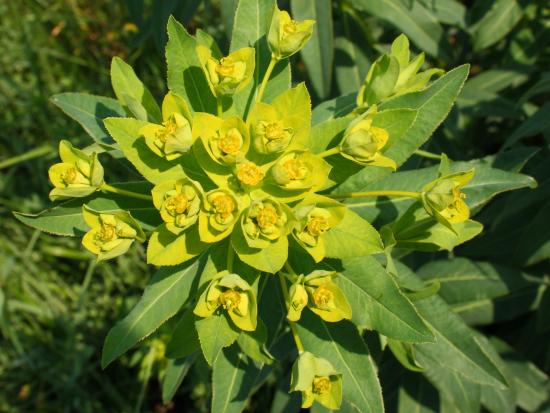
The fruit of milkweed is a three-hazel, quite large, its length is up to 0.7 cm. It is capable of clinging to clothing and animal fur, like burdock. The seeds are ovoid, smooth, 3 - 4 mm long. They ripen in late July - early August. The plant is widespread from the north of Europe to its south, in Siberia, and Asia. In the wild, it prefers damp and low places, water meadows, and the banks of water bodies.
The ability to grow in damp places gives marsh milkweed an advantage over other plants when landscaping very wet places. In garden design it harmonizes well with plants:
- marsh iris
- reed grass
- aquilegia
- tulips
- bows
Euphorbia is a very beneficial shade conifers and trees in artistic pruning. Low-growing varieties can be used as ground cover and borders. In many ornamental varieties, the stems and leaves turn purple-red in autumn. In addition to being decorative, marsh spurge is used as a medicinal plant. Perhaps that is why the Latin name for milkweed is euphorbia, it was received in honor of the famous legendary doctor of antiquity Euphorbus.
How to plant swamp spurge in a garden plot, caring for it
When choosing a place on the site, it is important to remember that spurge does not tolerate frequent transplants very well and will grow in one place for quite a long time.
Soil and lighting
Euphorbia prefers to grow in alkaline or neutral soils. If the soil on the site is acidic, additional application of lime or chalk will be required. In terms of mechanical composition, wet loams are most suitable.In good sunlight, the plant has a higher decorative value than in partial shade, although it also grows in shady places without any problems.
The plant tolerates dry periods quite well. It is enough to add peat or compost before planting and additionally add organic and fertilizers won't be needed for a few years. 2 - 3 fertilizing per season with complex mineral fertilizer is enough.
As a rule, it develops well on moderately fertile lands. Swamp spurge propagates by seeds and vegetatively. You can obtain planting material by dividing the bush or cuttings.
It is best to sow milkweed seeds in open ground in the fall. The area is dug up, peat, compost or humus is added, half a bucket per square meter is enough. m., as well as complex mineral fertilizers. The seeds are laid out in grooves and covered with 1 - 1.5 cm of soil. The top of the bed is mulched with peat. Shoots appear in spring, around the end of April.
Planting by dividing a bush and caring for milkweed
This method is suitable for both autumn and spring. In September or April, the mother bush is divided into several parts. Each of them should have a pair of well-developed buds. The cuttings are placed in planting pits and covered soil. The distance between plants should be 25 - 30 cm. If cuttings are used for planting, then after cutting they are allowed to lie for several hours until the milky juice stops flowing. Rooted in a greenhouse.
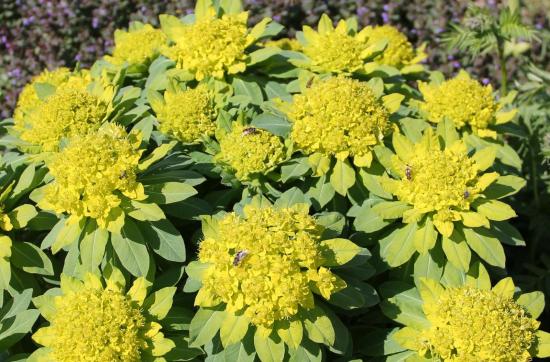
The plant needs periodic loosening of the soil and removal of weeds. It is important to remember that milkweed juice is quite toxic; you need to wear gloves when working. In the fall, all dried and rough shoots will be removed; usually they are cut off with a shovel. Overwinters without shelter.Milkweed has always received a lot of attention as a medicinal plant.
The use of marsh milkweed for medicinal purposes
Fresh milkweed juice is used externally as a remedy against warts, freckles, age spots, and dry calluses. It is enough to break a shoot of the plant and apply its juice to unwanted spots or warts. Do this daily for 10 - 14 days. Both above-ground parts and rhizomes are harvested as medicinal raw materials. Laxative decoctions are prepared from the dried plant, and they are also used as an anthelmintic.
A decoction of leaves and rhizomes has diuretic properties, and milkweed seed oil helps with liver diseases. In recent years, anti-cancer properties have been attributed to milkweed. medicinal properties, in case of oncology, it alleviates the patient’s condition and relieves pain. It is important to consult a doctor before starting your appointment.
Video on how to care for and use plants of the family Euphorbiaceae:

